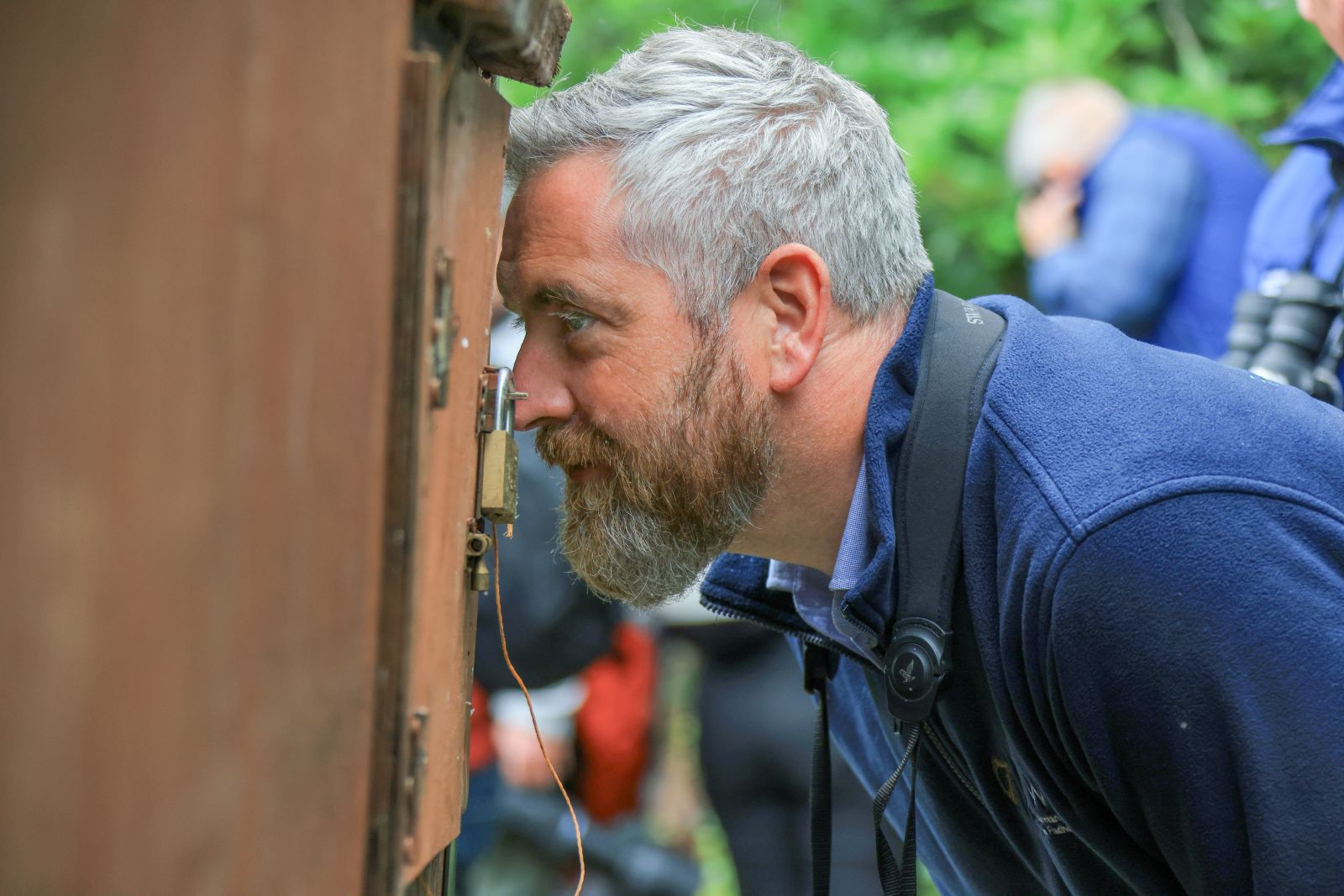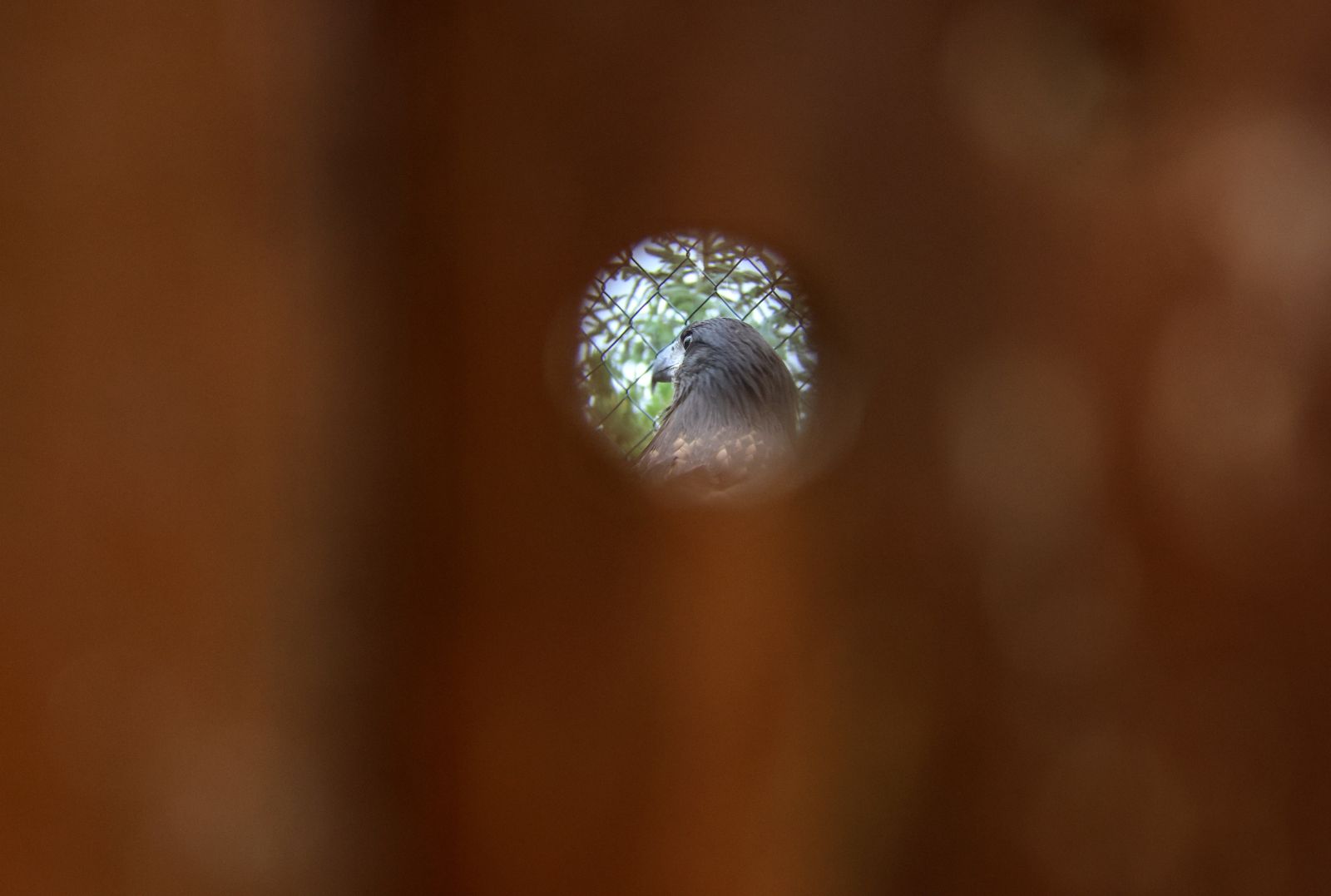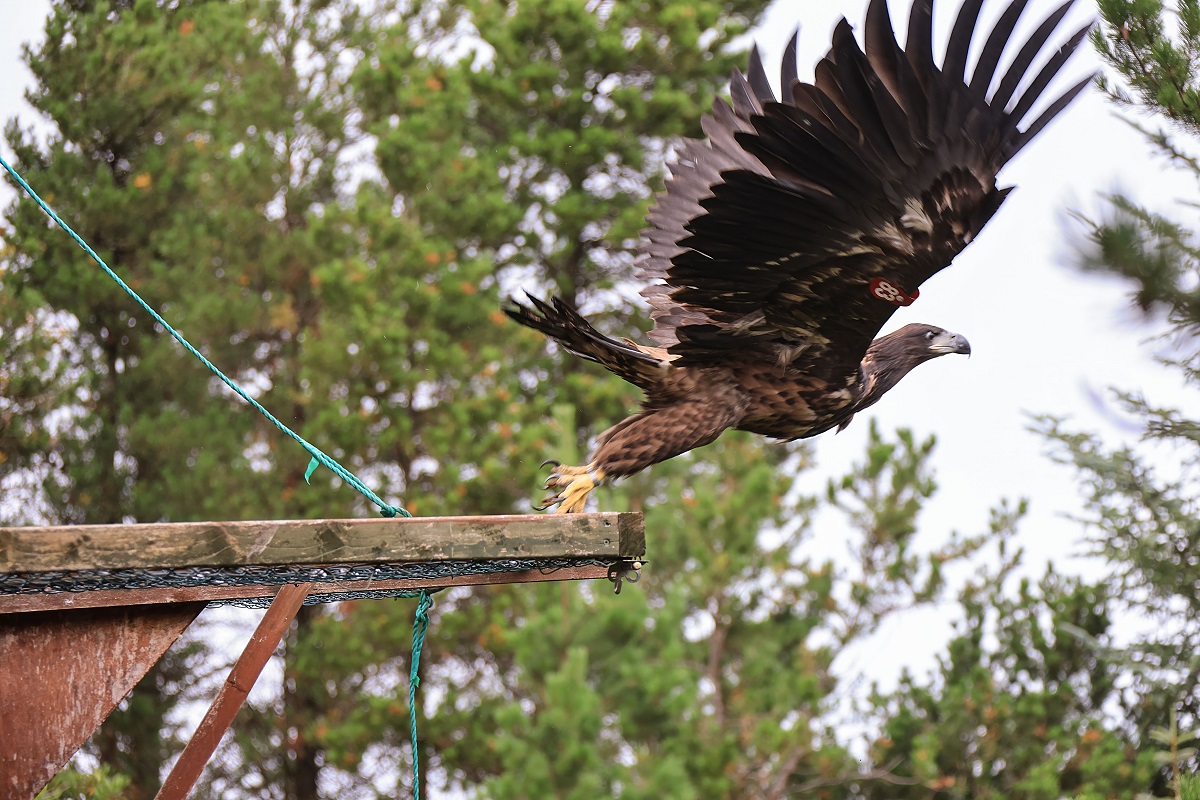News
White-tailed Eagle Reintroduction Programme marks successful completion with final release of chicks at Killarney National Park
Date Released: Monday, August 11, 2025
- Final year of NPWS reintroduction programme will see 26 chicks released to the wild
- A total of 245 chicks reintroduced since 2007
- Large numbers of breeding pairs now among established eagle population after absence of more than 100 years
The Minister of State for Nature, Heritage and Biodiversity, Christopher O’Sullivan TD, today marked the successful end of the White-Tailed Eagle Reintroduction Programme with the release of four white-tailed eagle chicks back into the wild at Killarney National Park.
The chicks are among the final cohort of this phase of the National Parks and Wildlife Service (NPWS) project which was originally established in 2007 and which, to date, has overseen the release of some 245 chicks into the wild. The programme is ending following a number of releases around the country this month.
Once native to Ireland, the white-tailed eagle became extinct in the nineteenth century. Since 2007, the NPWS has been working with partners in Norway along with farmers and communities around the country to reintroduce the white-tailed eagle and establish a population in Ireland. The white-tailed eagle is a bird of prey, and plays an important part in protecting our biodiversity.
Speaking in Killarney, Minister of State O’Sullivan said:
“This programme has seen this mighty bird soar again in Irish skies and its success is a tribute to the NPWS and their colleagues in the Norwegian Institute for Nature Research. Over 18 years work and collaboration has led to a growing white-tailed eagle population and also has seen habitat restoration and engagement with landowners and farmers to secure the eagles ongoing protection.
It is one of a number of key NPWS initiatives underway to restore our biodiversity. This is the second phase of this reintroduction project, and we now have evidence of white-tailed eagles breeding in counties further afield - from the south of the island in Cork right up to Donegal.
Killarney is a special place for the white-tailed eagle. This year, in Killarney National Park, two chicks have successfully fledged for the fourth year in a row. So, whilst we are sad to see the programme come to a close this year, it leaves a lasting legacy in the skies.”


Minister O' Sullivan during release. Photo Credits: Valerie O'Sullivan
All of the chicks are fitted with satellite tags so that their movements can be tracked as they disperse and establish in new areas. The chicks are vulnerable to external factors such as adverse weather conditions, avian influenza, disease, and illegal poisonings.
Aslak Brun, Norway’s Ambassador to Ireland, said;
“I am impressed with the Irish Norwegian cooperation to reintroduce the white-tailed eagle to Ireland. Eagles are once again spreading their wings in Ireland, thanks to wildlife experts and volunteers from both our countries.
“We have the obligation to protect nature and halt the loss of biodiversity. It is my hope that the unique cooperation to reintroduce eagles will serve as an inspiration for other wildlife projects.”
Niall Ó Donnchú, Director General with the NPWS said:
“This reintroduction Programme really is a flagship initiative for NPWS, as it reflects so many elements of our conservation work – time and care, using science and best practice, combined with strong community engagement and partnership.”
Eamonn Meskell, Divisional Manager NPWS, Killarney National Park said:
“All of us at Killarney National Park welcome the white-tailed eagles returning to nest, breed and fledge their chicks. The Park provides the perfect nesting habitat, with its old, tall oak and pine trees, quiet surroundings and an ample supply of fish available in the lakes for their survival.”

Further Information
Photos of Minister O'Sullivan at the Killarney event this morning free to use. Please credit Valerie O'Sullivan.
About White-tailed Eagles: White-tailed Eagles feed on a wide variety of prey, including fish, waterbirds and carrion. They settle on territories around the coast and large freshwater lakes to breed. White-tailed Eagles are a protected species under the Wildlife Act. These magnificent birds, once a striking element of Ireland’s natural landscape, were driven to extinction on the island in the 19th Century because of human persecution. Restoring this lost flagship species to Irish skies is a significant step in restoring Ireland’s natural heritage and will bring great benefit to Irish biodiversity. It also has the potential to contribute significantly to local rural economies through eco-tourism opportunities.
About the white-tailed eagle Reintroduction Programme (2020 – 2025)
In 2020, the National Parks and Wildlife Service began a second phase white-tailed eagle reintroduction project to bolster the existing eagle population in Ireland. The original reintroduction programme (2007-2011) involved releasing 100 young white-tailed eagles in Killarney National Park, County Kerry. The released eagles subsequently dispersed widely throughout Ireland with the first successful breeding occurring in 2012 on Lough Derg, County Clare. By July 2020, a small breeding population of eight to ten pairs had successfully fledged 31 chicks across counties Cork, Kerry, Clare, Galway and Tipperary, including a pair who produced triplets.
It is estimated there are now approx. 150 individual eagles in the wild Ireland, enough to maintain and self-sustain the population. So far in 2025, the exact number of chicks born in the wild is unknown, but there are 17 known pairs in total.
In 2024, a total of 13 chicks were born from 10 pairs.
The programme involves the following:
- White-tailed eagle chicks (between seven to ten weeks old) are flown to Ireland from Norway each year
- Upon arrival, the chicks are transported to a safe and secure location where they are cared for by NPWS and reared until they are ready to be released back into the wild,
- The chicks are satellite-tagged so that their progress can be followed. Ongoing monitoring and tracking of the birds indicates that they are nesting and breeding in various locations around Ireland
More information on the White-Tailed Reintroduction Programme.
